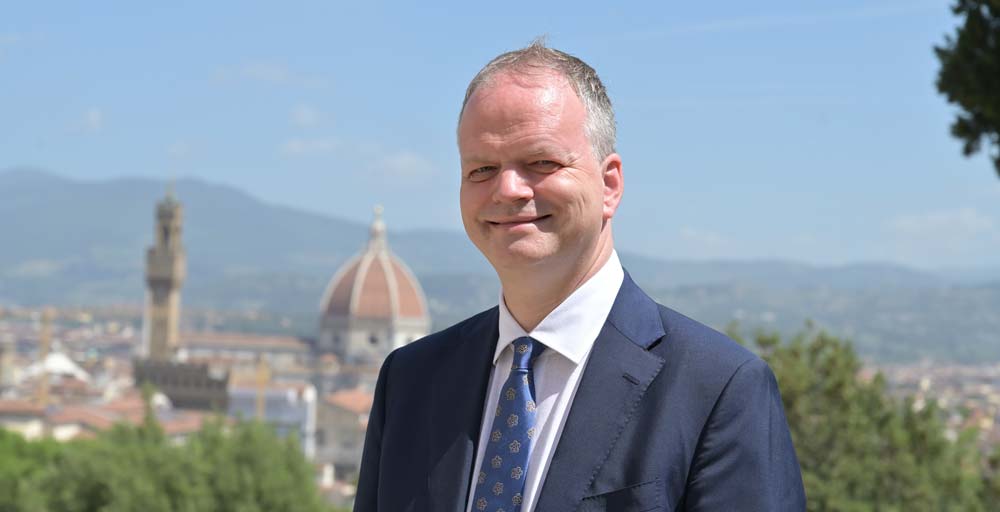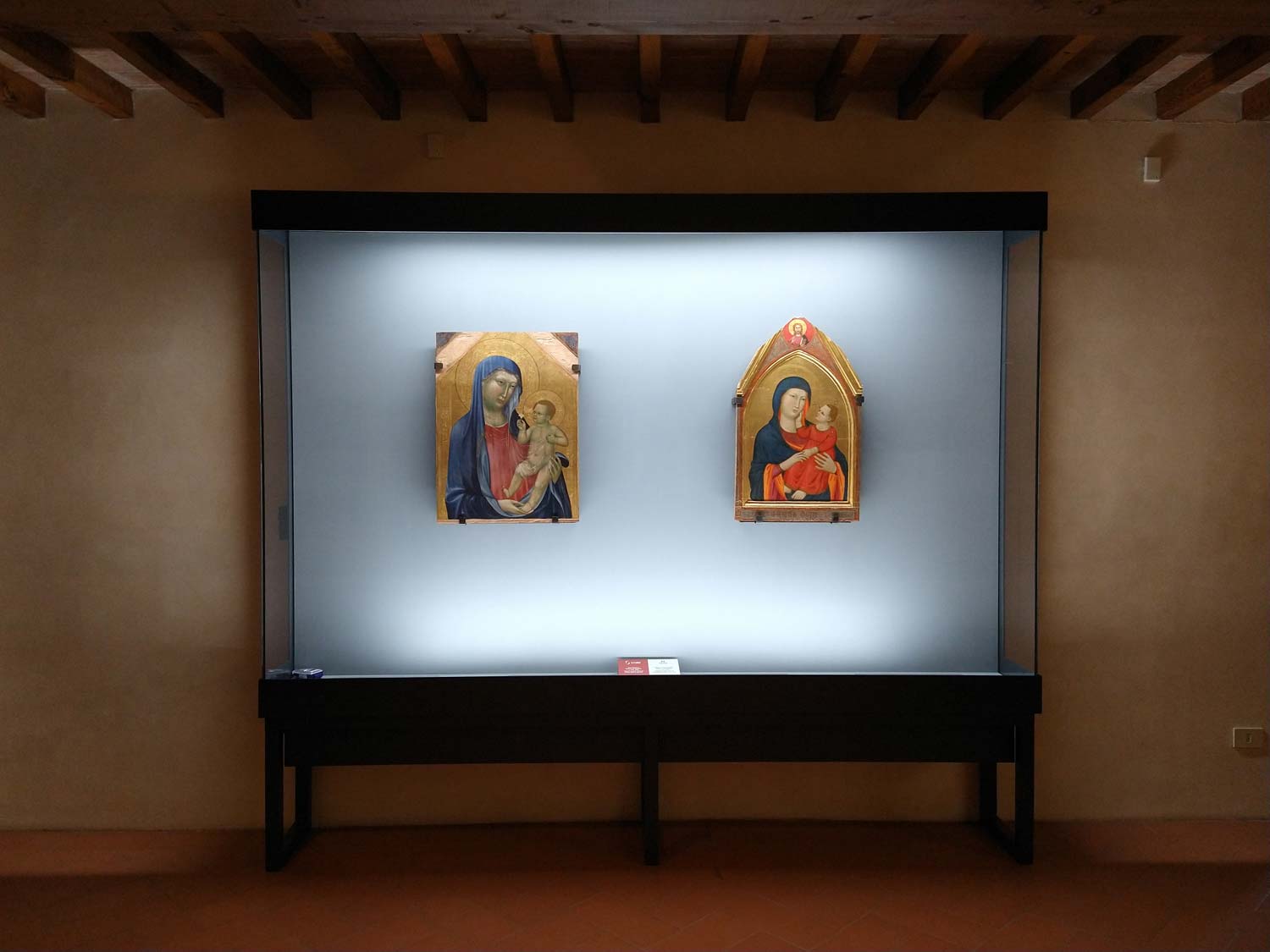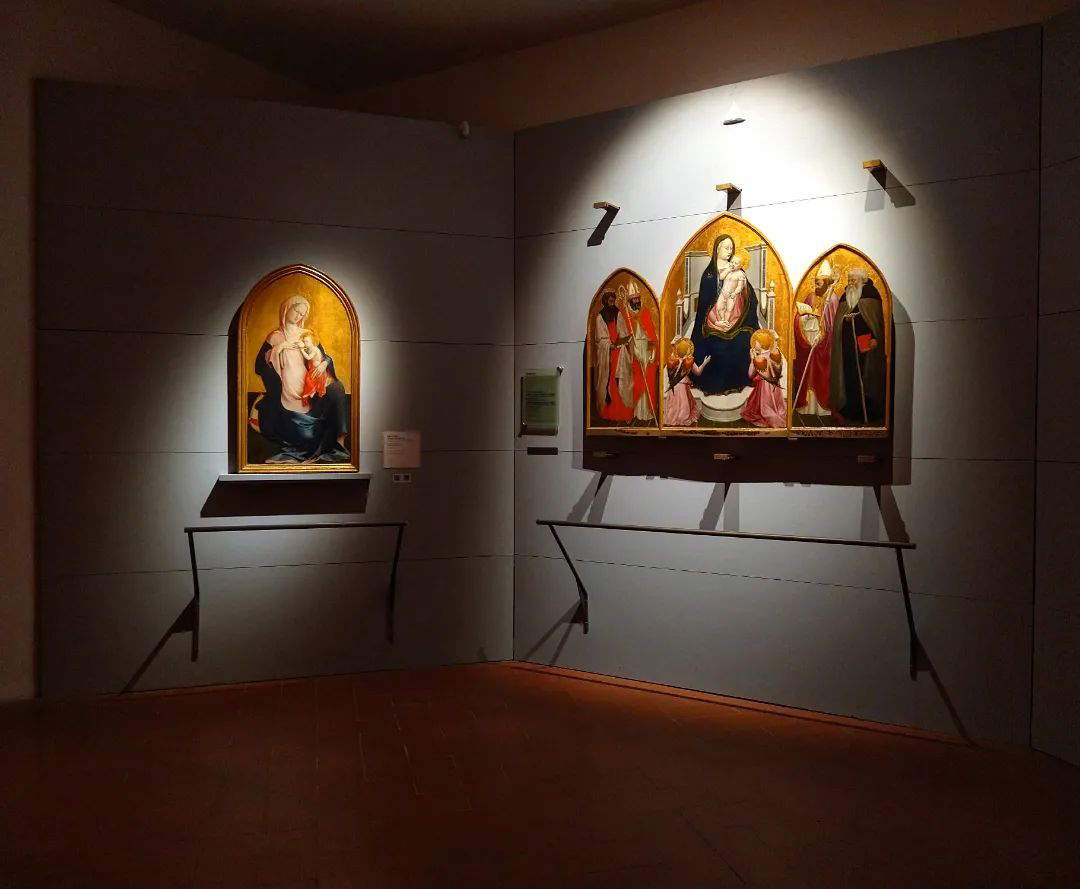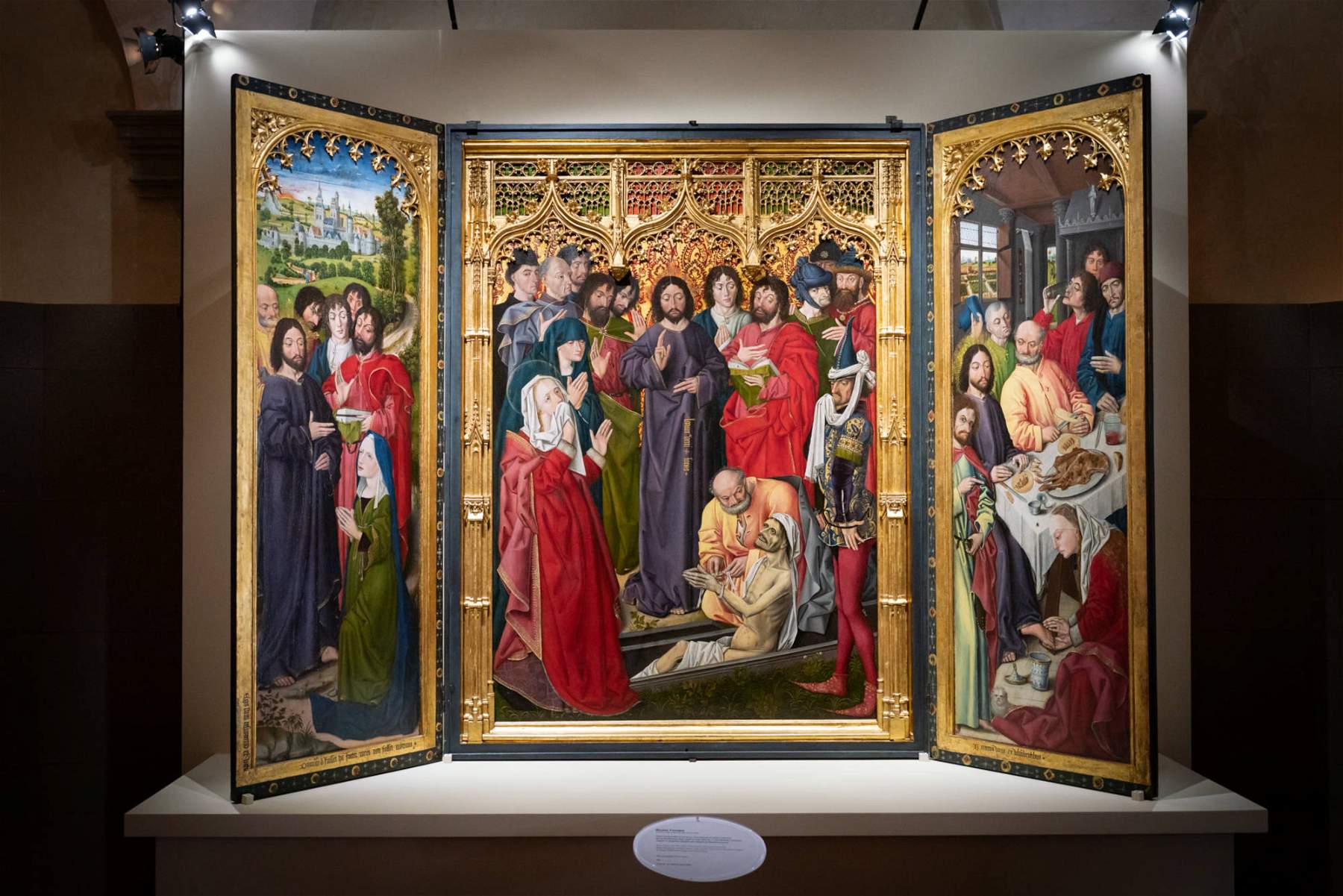A year and a half after the birth of the Uffizi Diffusi project, it is time to take stock: how many more locations will the project have? How will it continue? Next year will also see the first return of a Uffizi work to a local church: to what extent is it possible to reconnect the knots with the works’ contexts of origin? And how does Uffizi Diffusi fit in with its more immediate predecessor, the City of the Uffizi exhibition series? In this interview with Federico Giannini, Uffizi Director Eike Schmidt outlines the future of the project.

FG. Director, it has now been a year and a half since the Uffizi Diffusi project began. Can we take an initial stock? For example, some numbers, how the initiative has been received in the territories but also in the city, whether expectations have been met, what have been the spin-offs...? ?
ES. The balance is extremely positive. We have arrived at almost two years of activity on Uffizi Diffusi and the second season is almost over: since the beginning we have always done winter initiatives as well, and this aspect is very important because, beyond our goal of decongesting visitor flows through decentralization, of course we also think about deseasonalization as an additional goal, and we have seen that it works divinely. We have very positive numbers, this year even surpassing last year’s. Some of the winter initiatives are still ongoing, however, we know from the numbers of the first weeks that we are beyond all expectations here as well. So we can say that, from even a quantitative point of view, the success is confirmed, but what interests us even more are some qualitative data, for example, the fact that more than 80 percent of the people who come to see an exhibition of Uffizi Diffusi (which in any case does not consist only of exhibitions) visit for the first time that specific museum where the exhibition is held. In other words, our wish (and hope) that, thanks to the Uffizi Diffusi initiatives, people will also discover all the magnificent masterpieces that are already present in the area is fully confirmed. And this is because visitors often come to see the special initiative, but then they also discover what is already there.
It has often been said that the Uffizi Diffusi project has two great advantages: the first is that it brings communities closer, or reconnects them, to museums, and the second lies in its ability to spread art in the territories with all the relevant consequences on tourist flows, which we have already mentioned. In your opinion, is this model replicable elsewhere?
Certainly it is replicable at other realities, especially in the center-north, I have no doubt. But before replicating it obviously the priority is to make it more structural and to make it grow, also as a number of activities, in Tuscany. So we welcome the first two seasons of the project, which have been characterized by great growth and are truly an excellent landing place, but beyond the numerical growth of the initiatives, the project of course must also become more and more structural: that is, I imagine that people in five years, when they come to Tuscany, will immediately ask what the Uffizi Diffusi initiatives will be. In fact, we have already found that it is not only a matter of getting people to develop proximity tourism, which in any case is very important because it allows people to look beyond their own bell tower, to push them to visit the adjacent place (which perhaps in Tuscany is the most difficult thing of all I think of Florentines who never go to visit the Empolese et similia), and consequently to overcome a kind of excessive parochialism, a parochialism not of openness, which means to be proud of one’s own place and is a very healthy thing, but the parochialism of closure, the attitude of “I don’t go there because it’s not my city.” Here, it’s not just about getting tourism from nearby to develop, but also tourism that comes from far away: that’s why we also work from the communication point of view, starting with our website, where we inform about all the initiatives while also providing the public with an excellent resource for those planning a trip or a vacation, thinking especially about those who come to vacation in Tuscany without knowing the region in depth and maybe want to see something else besides the Uffizi or the Leaning Tower of Pisa. Somewhat like it has been in music tourism for some time now, where people travel to see the most interesting productions.
One of the most interesting elements of the project in my opinion is the quality standards of the proposal, which has always been maintained at a high level, with the result that in peripheral venues we have seen exhibitions curated and set up basically like the exhibitions held at the Uffizi. So I would like to ask, first of all, what were the criteria that led to the choice of certain venues over others, since there have been so many site visits that you have made, and then what are the standards to which the venues hosting the project’s exhibitions have to conform?
The standards that we are asking for, from a technical point of view, are those that have already been incorporated in the 2001 Ministerial Decree’s Guideline Act on Technical and Scientific Criteria and Standards for the Operation and Development of Museums, or those of the Icom on the security of works of art, which covers anti-theft measures, climate security measures and so on. Of course, exhibition venues must meet these parameters. In addition, a very important criterion for us is not to send works haphazardly, but to find reasons that connect the artworks to the area: it may be a painting that was in that place in the past, it may be that the artist came from there, it may be that a work depicts a saint who is venerated in that place, there may be thematic, historical connections and so on, because only in this way is the identity value of the art also best communicated. We are also open to collaboration and co-design with municipalities (usually a municipality is the entity with which we collaborate), however, we do not limit ourselves to that. We provide all our firepower, that of one of the world’s great art-historical research museums, and this is important to us. It means that we do not want superficial exhibitions: we are not interested in yet another reheated soup, we are not interested in yet another replica, instead we are interested in producing culture and knowledge based on research.

 Uffizi Diffusi
Uffizi DiffusiI remember that the Uffizi Diffusi project was born at a time when right from here, from the rooms where we are right now, a proposal had started that raised a lot of controversy, namely that of relocating some works in churches or at any rate in the contexts from which they came. You had given the example of the Rucellai Madonna, and now you have followed up what you had proposed with the plan to bring back, albeit temporarily, Raphael’s Madonna del Baldacchino, another fundamental masterpiece of art history, precisely to the Cathedral of Pescia where it was until 1697. What reactions has this initiative, which is nevertheless part of the Uffizi Diffusi, raised?
The reactions raised so far are all of great enthusiasm, not only in Pescia and Pistoia. However, I would like to return to the first point: when I had proposed, already in the first month of the Covid-19 pandemic, that is, at the end of March 2020, to bring back some selected works to the churches, the controversy strangely did not arise in Florence, where the aspect that surprised me the most was precisely the lack of controversy, because another proposal to bring the Rucellai Madonna to Santa Maria Novella had already been made in the past. Only about fifteen years earlier there had in fact been more than a thousand people who had made a collection of signatures with hundreds of subscriptions, and for some politicians and intellectuals of the period it seemed almost a matter of life and death to bring the work back there. Well, none of the people who spoke out at the time in favor of bringing the work back have now taken a position: that’s perfectly fine with me, but I found it very telling, because at the time the proposal was connected to a plan to charge admission to the church and to divide the funds between the Dominican order and the City of Florence. Now the juntas have changed, but in retrospect it was found that this proposal in the early 2000s was a purely political move, without any museological, art-historical or even religious basis, and this of course is always regrettable. However, as for the concrete case then, it was clear, even on the basis of the official response of the curia (i.e., that they would be willing to accept the work only if the state paid for everything), that my proposal would not be followed through, and so for the next few decades there is no doubt that the Rucellai Madonna, despite my proposal, will remain on display at the Uffizi. Moreover, in a room where there is an arrangement that works very well: as director of the Uffizi for that matter, I cannot say that I was sorry, however, it must also be reiterated that, contrary to what we have read in some newspapers, the current one is not the original arrangement by Scarpa, Michelucci and Gardella who had instead chosen, precisely as the anchor of this room, Cimabue’s Crucifix of Santa Croce which then returned to Santa Croce. So even though the idea of putting these three altarpieces in this room is nothing more than an afterthought, the arrangement will not be touched. We were saying that the discussion did not originate in the Florentine media, or even in the Italian media: in fact, it originated in the Anglo-Saxon and even German-speaking media, and the positive aspect of the controversy is that in those areas, anyway, it has caused some works of art to return from museums to churches. So the interesting aspect of the controversy is the global resonance of the proposal, and the fact that there is a worldwide discussion about the different functions of a work of art in a museum or church, as well as the potential and risks. It’s a discussion that has just begun and is now continuing among experts and the public, especially the Anglo-Saxon public. I am glad to have thrown this stone in the pond.
But in your opinion, however, to what extent can contexts be stitched together? Leaving aside the Rucellai Madonna and speaking of the Madonna del Baldacchino, there is no doubt that the work has a history linked to grand ducal collecting and therefore to the Uffizi, so it is unthinkable that such a work would leave the museum forever. Is it possible, however, in your opinion, to think of permanent returns to the territory, perhaps not of works that have an important history linked to their museums, but for example of works that are in storage?
It is possible and it is desirable: consider that, in Tuscany, the repositories pertain not only to the Uffizi but also to the Regional Directorate of Museums of Tuscany, so it is true that we have huge treasures that are larger than other museum institutions, but there are also many other institutions, especially the superintendencies, that have repositories full of works of art that come from churches. The risk of leaving works that come from the territories in storage for a long time is that after a few years or a few decades no one in the place of origin remembers the existence of the works anymore, or where they ended up. So those places are robbed of their identity. All the things that are in the repositories could and should come back. Of course we have to go one step at a time, sometimes it is a simple thing (often some works can go back to their places of origin after a simple restoration), in other cases it is more complex, and this is a great task for the future: now more superintendencies hold more works from the territory in their storerooms than museums. And it is, however, a pity to have some parts of the decorations in storage and not usable on site.

 Uffizi Diffusi
Uffizi DiffusiBack on the topic of Uffizi Diffusi: one of the projects in the pipeline is the “Uffizi del mare” in Livorno, which will be based at the Terme del Corallo. Where are we in the works?
We are just at the beginning of the recovery of this extraordinary property, but as I had said since the announcement of the project, it cannot consist only in the recovery of a building: what needs to be done is to stitch up the urbanism of the heart of Livorno, tearing down the very ugly overpass that they built and replacing it with the new system of roadways. Right now there are just some hypotheses being studied that involve the opening of underpasses, and I can say (and I can confirm) that the city administration has been actively working in these sixteen months since the project began to solve all these problems. This is also true for the Tuscany Region and the various ministries involved, which have followed up on the issue by also providing some funds to continue with the restoration. As for the contents of the project, it is an architectural work related to the Art Nouveau style, and therefore works would have to be brought from the deposits of the Modern Art Gallery of Palazzo Pitti in Livorno, although it is too early to say which works will arrive. It is a beautiful project but it will still take years, however, the people of Livorno always have great pertinacity and even with this project they have already shown it, because the associations were the first to clear the ruins of this building and the work continues even now.
Many of the Uffizi visitors from the “old guard,” so to speak, whenever they hear about Uffizi Diffusi invariably cannot help but mention one of its predecessors, the “City of the Uffizi” project, the series of exhibitions that the museum periodically organized outside Florence before the Franceschini reform and autonomy. What are the similarities and differences of Uffizi Diffusi compared to that project?
The City of the Uffizi has had almost twenty iterations, however, usually in one place each year, and compared to Uffizi Diffusi there are similarities and there are differences. The title, meanwhile, was poorly chosen because outside of Florence there is no “City of the Uffizi.” That is, Empoli is not the “City of the Uffizi,” it is a city where the Uffizi is not, it is a different city. Then this project eventually degenerated a little bit because it was taken to places that had nothing to do with Tuscany, from Lombardy to the South, and so it kind of lost its thread. And then the venues were often the same, whereas we have already worked with many more different places in two years than the whole series of Uffizi City exhibitions in more than a decade. The idea was a good one, though, and it should certainly be included among the various precursors that also inspired the Uffizi Diffusi. Another important source of inspiration and development was the initiative, which had no name, of Antonio Paolucci in collaboration with Rosanna Caterina Proto Pisani that restored, reorganized and made usable some small museums in the territory, especially in the province of Florence, and was born out of the fact that the superintendence of Florence had these territorial responsibilities. Antonio Paolucci, above all, was the great driving force behind the initiative and felt a great responsibility toward the territory, and by the way, already in the 1970s, before small museums could be restored, he himself organized initiatives (for example, with schools) that involved cataloging works of art in their territory. Finally, the third forerunner was the CR Florence Foundation’s Piccoli Grandi Musei project. These are all virtuous examples that we tried to put together, to make systematic, without leaving anything to chance, without working maybe because someone knows some mayor here or there or had some family connection with some place. It was especially important to make Uffizi Diffusi a systematic project and to think just about the whole of Tuscany. And this is also very different from previous projects, which were basically limited mainly to the province of Florence.
As your term is expiring, there are questions about how the project will be articulated in the future. In the meantime, we can say that there is an agreement between Uffizi and Fondazione CR Firenze until 2026, so continuity at least in the medium term we imagine will be assured: what scenarios however could open up in the future? And again, in February 2021 you announced that the Uffizi spread will have 100 locations: where are we on the road to this goal?
The prospect is to increase to beyond one hundred venues, and we are on track (although it is currently still too early to announce which new cities will be affected by the project: we will do that in due time), because we have exceeded one-third of the venues after only two years, so even if it is a matter of giving continuity to the whole project, it is important to give it to individuals as well, and it is useful to have a constant offer. That doesn’t mean that we always have to have some activity in all locations, Uffizi Diffusi can be activated in one location even every other year. In other places, on the other hand, there can be more continuity: take the case of Ravenna, where we now have a room of Dante’s works from the Uffizi in the House of Dante, and so this element offers a continuity of relationship that makes potential visitors be attracted by the stability of the offer. The latter of the rest is crucial, as is growth. And then we will work to bring them into the system. This, of course, can only happen at a later stage, but, for example, the idea of concretely linking individual sites with bicycle paths, as is being done right now between Montelupo Fiorentino and Empoli, is certainly a very virtuous aspect, as is the integration of cultural and museum tourism with wine and food tourism, athletics, nature tourism, and so on. There is still a lot to be done on this aspect, but let’s say that the conditions are optimal. I think that already now Uffizi Diffusi has reached a dynamism that will be difficult to slow down or stop, because in every place where you have seen a success obviously the desire to continue is also born, so while in the beginning it was strongly linked to my person obviously the idea is that also in the future, when I am no longer here, the project can not only continue, but also continue to grow. Then it is very important to have some stronger presences in the territory: You have already mentioned the Uffizi of the Sea, but surely the Villa dell’Ambrogiana in Montelupo Fiorentino will also be indispensable to activate all the other Medici villas of the second circle, those that are more distant from Florence, because it constitutes precisely the missing link: until there is the great branch of the Villa dell’Ambrogiana, the other villas will never flourish. In essence, continuing is an absolute necessity. However, even for this last project the first money has already arrived and we are on the right track. Fortunately, it is too late to stop a project like the Uffizi Diffusi.
Warning: the translation into English of the original Italian article was created using automatic tools. We undertake to review all articles, but we do not guarantee the total absence of inaccuracies in the translation due to the program. You can find the original by clicking on the ITA button. If you find any mistake,please contact us.